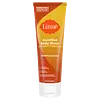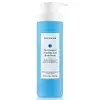What's inside
What's inside
 Key Ingredients
Key Ingredients

 Benefits
Benefits

 Concerns
Concerns

 Ingredients Side-by-side
Ingredients Side-by-side

Water
Skin ConditioningCocamidopropyl Hydroxysultaine
CleansingSodium Methyl 2-Sulfolaurate
CleansingDisodium 2-Sulfolaurate
CleansingParfum
MaskingGlycerin
HumectantCaprylyl Glycol
EmollientGlyceryl Oleate
EmollientCoco-Glucoside
CleansingEthylhexylglycerin
Skin ConditioningPhenethyl Alcohol
MaskingAloe Barbadensis Leaf Juice Powder
Skin ConditioningCitric Acid
BufferingMandelic Acid
AntimicrobialCucumis Sativus Fruit Extract
EmollientCalendula Officinalis Flower Extract
MaskingPalmaria Palmata Extract
Skin ProtectingBambusa Vulgaris Shoot Extract
AntioxidantWater, Cocamidopropyl Hydroxysultaine, Sodium Methyl 2-Sulfolaurate, Disodium 2-Sulfolaurate, Parfum, Glycerin, Caprylyl Glycol, Glyceryl Oleate, Coco-Glucoside, Ethylhexylglycerin, Phenethyl Alcohol, Aloe Barbadensis Leaf Juice Powder, Citric Acid, Mandelic Acid, Cucumis Sativus Fruit Extract, Calendula Officinalis Flower Extract, Palmaria Palmata Extract, Bambusa Vulgaris Shoot Extract
Water
Skin ConditioningSodium Cocoyl Isethionate
CleansingCocamidopropyl Betaine
CleansingCocamide Mipa
EmulsifyingCoco-Glucoside
CleansingGlycerin
HumectantPropanediol
SolventMenthyl Lactate
MaskingMandelic Acid
AntimicrobialSaccharomyces Ferment Filtrate
HumectantPotassium Cocoyl Glycinate
Sodium Lauroyl Methyl Isethionate
CleansingPotassium Cocoate
EmulsifyingSodium Methyl Oleoyl Taurate
CleansingHelianthus Annuus Seed Oil
EmollientCamellia Sinensis Leaf Extract
AntimicrobialCitrus Aurantium Dulcis Peel Extract
Emulsion StabilisingCucumis Sativus Fruit Extract
EmollientLavandula Angustifolia Flower/Leaf/Stem Extract
MaskingEucalyptus Globulus Leaf Extract
PerfumingCitrus Aurantium Amara Leaf/Twig Extract
Skin ConditioningMalus Domestica Fruit Extract
AntioxidantMentha Piperita Leaf Extract
Skin ConditioningRosmarinus Officinalis Leaf Extract
AntimicrobialSalvia Officinalis Leaf Extract
CleansingChamomilla Recutita Flower Extract
MaskingAloe Barbadensis Leaf Juice
Skin ConditioningGlycol Distearate
EmollientCaprylyl/Capryl Glucoside
CleansingLauryl Glucoside
CleansingHydroxyacetophenone
AntioxidantPolyquaternium-10
Polyquaternium-39
Caprylyl Glycol
Emollient1,2-Hexanediol
Skin ConditioningTrisodium Ethylenediamine Disuccinate
Guar Hydroxypropyltrimonium Chloride
Skin ConditioningCitric Acid
BufferingMagnesium Sulfate
Tocopherol
AntioxidantSodium Benzoate
MaskingPotassium Sorbate
PreservativeLimonene
PerfumingLinalool
PerfumingPhenoxyethanol
PreservativeWater, Sodium Cocoyl Isethionate, Cocamidopropyl Betaine, Cocamide Mipa, Coco-Glucoside, Glycerin, Propanediol, Menthyl Lactate, Mandelic Acid, Saccharomyces Ferment Filtrate, Potassium Cocoyl Glycinate, Sodium Lauroyl Methyl Isethionate, Potassium Cocoate, Sodium Methyl Oleoyl Taurate, Helianthus Annuus Seed Oil, Camellia Sinensis Leaf Extract, Citrus Aurantium Dulcis Peel Extract, Cucumis Sativus Fruit Extract, Lavandula Angustifolia Flower/Leaf/Stem Extract, Eucalyptus Globulus Leaf Extract, Citrus Aurantium Amara Leaf/Twig Extract, Malus Domestica Fruit Extract, Mentha Piperita Leaf Extract, Rosmarinus Officinalis Leaf Extract, Salvia Officinalis Leaf Extract, Chamomilla Recutita Flower Extract, Aloe Barbadensis Leaf Juice, Glycol Distearate, Caprylyl/Capryl Glucoside, Lauryl Glucoside, Hydroxyacetophenone, Polyquaternium-10, Polyquaternium-39, Caprylyl Glycol, 1,2-Hexanediol, Trisodium Ethylenediamine Disuccinate, Guar Hydroxypropyltrimonium Chloride, Citric Acid, Magnesium Sulfate, Tocopherol, Sodium Benzoate, Potassium Sorbate, Limonene, Linalool, Phenoxyethanol
 Reviews
Reviews

Ingredients Explained
These ingredients are found in both products.
Ingredients higher up in an ingredient list are typically present in a larger amount.
Caprylyl Glycol is a humectant and emollient, meaning it attracts and preserves moisture.
It is a common ingredient in many products, especially those designed to hydrate skin. The primary benefits are retaining moisture, skin softening, and promoting a healthy skin barrier.
Though Caprylyl Glycol is an alcohol derived from fatty acids, it is not the kind that can dry out skin.
This ingredient is also used as a preservative to extend the life of products. It has slight antimicrobial properties.
Learn more about Caprylyl GlycolCitric Acid is an alpha hydroxy acid (AHA) naturally found in citrus fruits like oranges, lemons, and limes.
Like other AHAs, citric acid can exfoliate skin by breaking down the bonds that hold dead skin cells together. This helps reveal smoother and brighter skin underneath.
However, this exfoliating effect only happens at high concentrations (20%) which can be hard to find in cosmetic products.
Due to this, citric acid is usually included in small amounts as a pH adjuster. This helps keep products slightly more acidic and compatible with skin's natural pH.
In skincare formulas, citric acid can:
While it can provide some skin benefits, research shows lactic acid and glycolic acid are generally more effective and less irritating exfoliants.
Most citric acid used in skincare today is made by fermenting sugars (usually from molasses). This synthetic version is identical to the natural citrus form but easier to stabilize and use in formulations.
Read more about some other popular AHA's here:
Learn more about Citric AcidCoco-Glucoside is a surfactant, or a cleansing ingredient. It is made from glucose and coconut oil.
Surfactants help gather dirt, oil, and other pollutants from your skin to be rinsed away.
This ingredient is considered gentle and non-comedogenic. However, it may still be irritating for some.
Learn more about Coco-GlucosideThis extract comes from cucumber. Cucumbers are mostly made up of water (95%), and the other 5% is composed of: vitamin C, caffeic acid, fatty acids, amino acids, and other minerals.
Cucumbers have anti-inflammatory, barrier repair, and hydrating properties.
They contain shikimate dehydrigenase, an enzyme shown to help reduce inflammation and soothe the skin.
The amino acids found in cucumbers help nourish our skin's natural acid mantle (it's an important part of our skin barrier). This slightly acidic film acts as a barrier to protect us from bacteria, viruses, and other contaminants.
Unless you have an allergy to cucumbers, this is generally a non-irritating ingredient.
Fun fact: Cucumis Sativus is native to South Asia and can now be found on every continent.
Learn more about Cucumis Sativus Fruit ExtractGlycerin is already naturally found in your skin. It helps moisturize and protect your skin.
A study from 2016 found glycerin to be more effective as a humectant than AHAs and hyaluronic acid.
As a humectant, it helps the skin stay hydrated by pulling moisture to your skin. The low molecular weight of glycerin allows it to pull moisture into the deeper layers of your skin.
Hydrated skin improves your skin barrier; Your skin barrier helps protect against irritants and bacteria.
Glycerin has also been found to have antimicrobial and antiviral properties. Due to these properties, glycerin is often used in wound and burn treatments.
In cosmetics, glycerin is usually derived from plants such as soybean or palm. However, it can also be sourced from animals, such as tallow or animal fat.
This ingredient is organic, colorless, odorless, and non-toxic.
Glycerin is the name for this ingredient in American English. British English uses Glycerol/Glycerine.
Learn more about GlycerinMandelic Acid is an alpha hydroxy acid (AHA).
Like other AHAs, it helps exfoliate the surface of the skin by breaking down the bonds that hold dead skin cells together. This helps reveal smoother and brighter skin underneath.
Mandelic acid helps with:
Due to it having a larger molecular size than glycolic acid, mandelic acid is able to penetrate the skin more slowly and evenly. This makes it gentler and less irritating, making it a great option for sensitive or beginner skin.
Despite being milder, mandelic acid is still an effective exfoliant that improves skin texture and tone over time.
What makes mandelic acid stand out from other AHAs? It has antibacterial and antioxidant properties.
These traits make it a great option for acne-prone or problem skin by reducing active breakouts and fading post-acne marks. Studies show that mandelic acid (especially when combined with salicylic acid) can significantly reduce pimples and hyperpigmentation while causing fewer side effects than stronger acids.
Mandelic acid is effective in concentrations of 5% and up with an ideal pH range of 3-4 for at-home use.
Like other AHAs, it’s important to wear sunscreen daily to protect your newly exfoliated skin.
However, unlike glycolic acid, mandelic acid is light-sensitive. Be sure your mandelic acid is packaged in opaque containers to ensure it stays stable and effective.
In short, mandelic acid is a gentle yet powerful AHA that exfoliates, brightens, and helps clarify skin while keeping irritation low. Its antibacterial action makes it especially beneficial for those with acne-prone, sensitive, or uneven skin, offering smoother, clearer, and more even-toned results over time.
Read more about some other popular AHA's here:
Learn more about Mandelic AcidWater. It's the most common cosmetic ingredient of all. You'll usually see it at the top of ingredient lists, meaning that it makes up the largest part of the product.
So why is it so popular? Water most often acts as a solvent - this means that it helps dissolve other ingredients into the formulation.
You'll also recognize water as that liquid we all need to stay alive. If you see this, drink a glass of water. Stay hydrated!
Learn more about Water